Wednesday 6th May – Year 6
SPaG:
Today we are going to recap our knowledge on phrases and clauses.
Can you think of any of the phrases and clauses we have learnt so far i.e expanded noun phrase, subordinate clause etc.
Go through this PowerPoint reading the information and completing the tasks on the different types of phrases and clauses.
Now complete this table:
| Example | Phrase | Clause |
| The red balloon floated above the treetops. | ||
| At midnight, the church bell chimed eerily. | ||
| The majestic elephant trumpeted loudly at the surprised tourists. | ||
| Noah slurped his milkshake as quickly as possible. | ||
| On Saturday, I went to the cinema. | ||
| Penny sang beautifully at the school concert. | ||
| Next year, we are visiting New York. | ||
| Lara and Zoe skipped along the seafront. |
Extra task:
Write some examples of the different phrases and clauses that you have looked at.
Maths:
Today we are going to look at what angles add up in quadrilaterals – can you guess? Hint: think of a square.
We are also going to put all of the skills together that we have learnt so far in order to find some really difficult missing angles. Let’s see how you do!
Follow the instructions on the PowerPoint.
angles-in-quadrilaterals-lesson
Task 1:
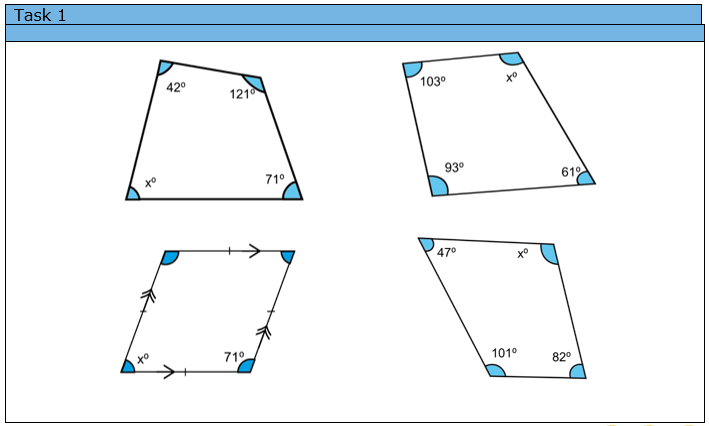
Now go back to the PowerPoint to check your answers and continue to the next step.
Help box:
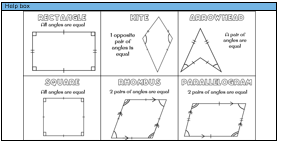
Use this if you need a reminder over the next few tasks.
Task 2:
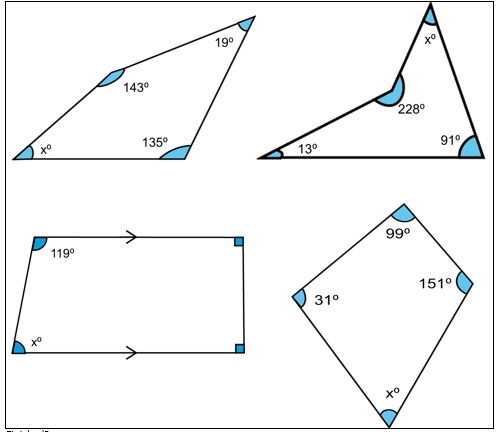
Task 3: For the following questions, you will need to use other angle knowledge i.e. angles on a straight line etc.
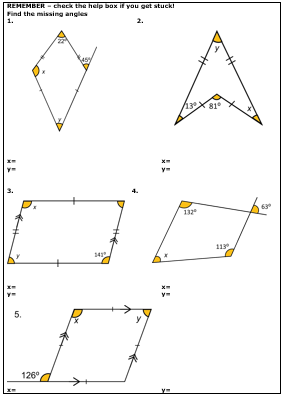
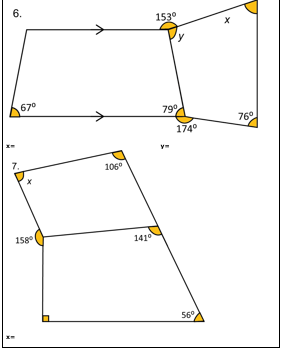
Task 4: This questions involve algebra and are particularly challenge. Only tackle these if you have fully understood the blue and yellow boxes because I don’t want you to lose confidence on this final step.

Science:
Think back to the symbol work that you completed last week.
Task 1: See if you can draw an electric circuit using some of the symbols. Hint: You will not need everything to make a bulb light up, but there are certain parts you will have to include.
Here are some examples of what you could have drawn:
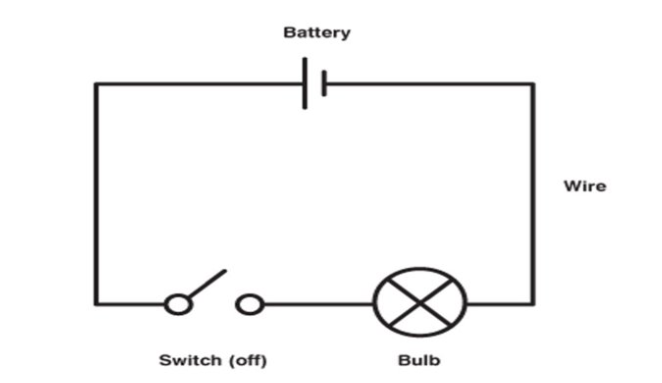
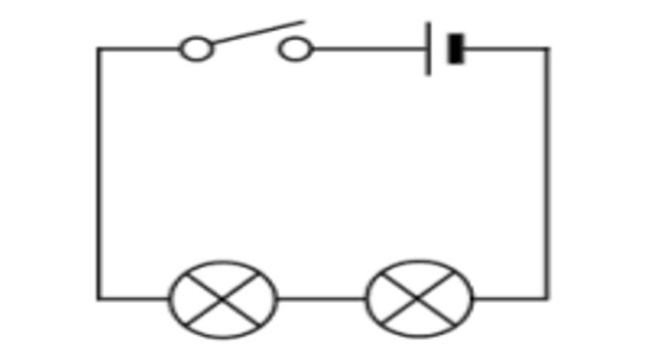
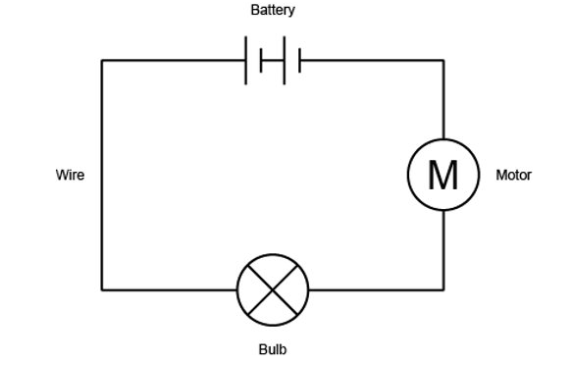
What did you notice was similar about all of the circuits?
Vocabulary:

Read the text below about the history of electricity and then answer the questions.
Questions:
- What does the word ‘electricus’ mean?
- Write a brief explanation about the discoveries that each scientist made.
- Did Thomas Edison invent the lightbulb? How do you know?
- Write 2 examples of modern electrical appliances that use a motor.
- The voltaic pile ensured a steady electric current. Why did this lead to the wider use of electricity?
- How are the AC and DC currents different? Include two examples.
- Who won the war of the currents and why?
Extra task:
Reconnect with nature today, even if you are stuck indoors.
Some ideas:
- Paint/draw a picture from your window or of your favourite scene
- Spend some time in your garden
- Use boxes etc to create a bug hotel
- Watch an episode of Blue Planet or Planet Earth

SPAG.
1. Phrase
2. Clause
3. Phrase
4. Clause
5. Phrase
6. Clause
7. Phrase
8. ?
What do you think 8 is?
Maths:
Task 1:
1.126
2.103
3.71
4.130
On the circuits they all have a bulb a switch and a battery#
.
Why do you think that is?
SPAG:
1.clause 2.clause 3.phrase 4.phrase 5.clause 6.clause 7.phrase 8.phrase
Science:
they have a bulb a switch and a battery
Why do you think that is?
Maths.
Task 1.
1. 126 degrees 2. 103 degrees 3. 109 degrees 4. 130 degrees
Task 2.
1. 63 degrees 2. 28 degrees 3. 61 degrees 4. 79 degrees
SPAG
1.Phrase
2.Clause
3.phrase
4.Clause
5.Phrase
6.Clause
7.Phrase
8.Clause
MATH
TASK 1
1. 126
2. 103
3. 109
4.130
Phrases and clauses:
1, clause
2, phrase
3, clause
4, clause
5, phrase
6, clause
7, phrase
8, clause
MATHS
TASK
1.63
2.28
3.61
4.49
Maths 1️⃣ 2️⃣3️⃣4️⃣ 2️⃣ 3️⃣3️⃣7️⃣ 3️⃣ 1️⃣8️⃣0️⃣
science
1. Means electric .
2.Benjamin franklin was the first person to discover electricity.
3.Yes ,because it is in the test.
4.Generator and Tranforma
5.?
6.The AC the electric charge changes direction periodically and DC go straight.
7. DC because was much safar.
Did you find this interesting?
SPaG:
1.phrase
2.phrase
3.phrase
4.clause
5.phrase
6.clause
7.clause
8.phrase
Well done Armands
1)electricus refers to ambers static electricity
2)Michael Faraday made a electric motor by a magnet in a wired coil
3)he made the modern light bulb because in the text he help to improve the light bulb
4)fans and washing machines
5)because it was able to make power out of it
6)AC currents change direction while DC goes in one direction
7)the AC current because its was safer and it was cheaper
maths:
task one
1.126
2.103
3.147
4.130
Science
1. Electricus is a Latin word created by William Gilbert who distinguished between magnetism of metals and static electricity.
2.
Benjamin Franklin
Discovered that lightning was electrical by flying a kite with a key attached in a storm. ⚡️💧 He was the first scientist to store electricity that consisted of positive and negative charge.
Alessandro Volta
Invented the first battery called the ‘voltaic pile’ His surname is also the basis for the words ‘Volt’ and voltage.
Michael Faraday
Used Volta’s discoveries to make an electric current move by using a magnet inside a wire coil.
Thomas Edison
Invented the modern light bulb by improving the amount of time they stayed lit.
Lewis Latimer
Worked for Edison and invented the filament part of the lightbulb which helped it stay lit for longer.
3. No lightbulbs were already a thing however he improved it but he didn’t it was actually his assistant how improved it
4. A toaster and a hover.
5. This led to wider use of electricity because it allowed electric currents to be used to power other objects.
6. Ac currents are more powerful but travel at higher more deadly voltages. On the other hand dc currents are less powerful but travel at lower voltages.
7. Ac won with its superior volts being able to power more and it could be increased and decreased making the easy winnner
Some great answers Ryan. Well done
SPaG
1. Clause
2. Clause
3. Phrase
4. Clause
5. Phrase
6. Phrase
7. Phrase
8. Clause
To Miss Kinsella ,
I can not open the power points so is there another way I can do my work
from Chanel
1.phrase
2.clause
3.phrase
4.clause
5.phrase
6.clause
7. phrase
8. clause